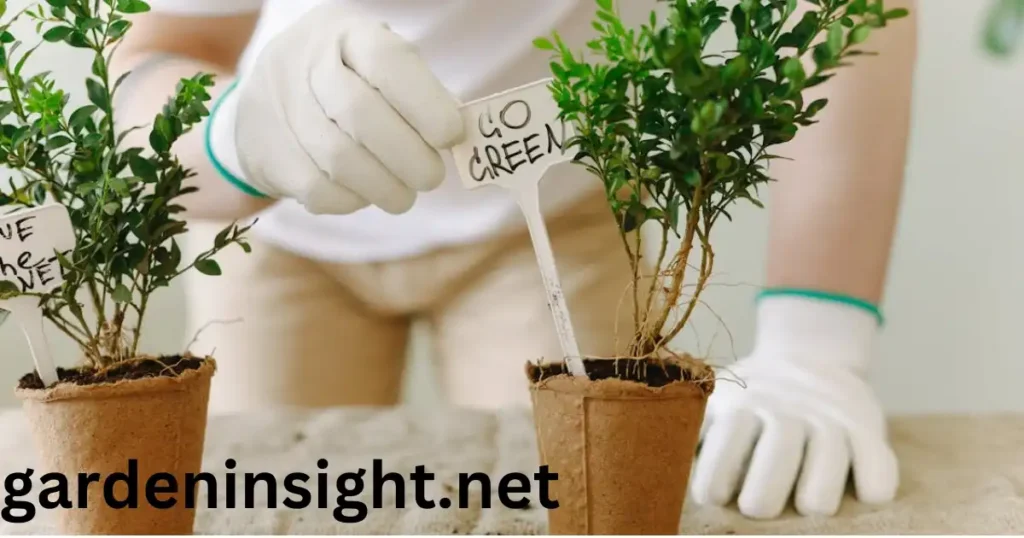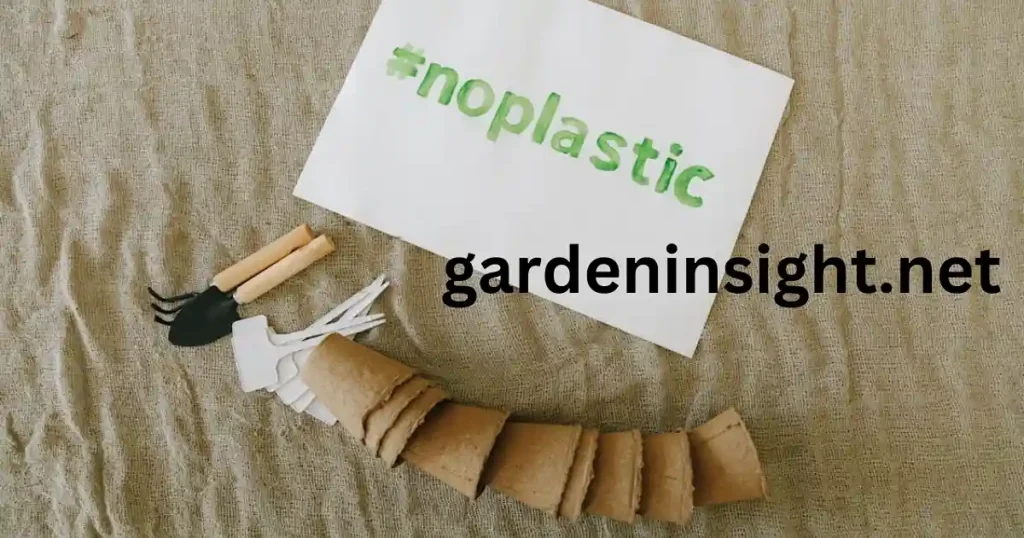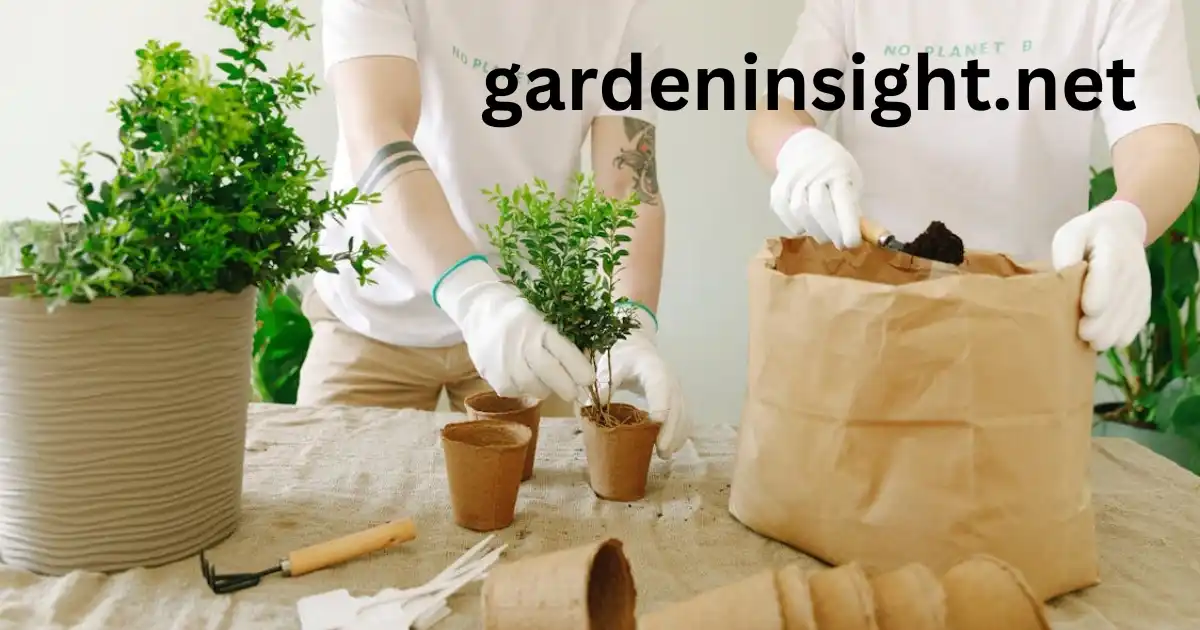Toilet paper rolls, a common household item, can play an unexpected yet impactful role in gardening. By reusing these biodegradable toilet paper rolls in gardening, gardeners can create seed starters, plant supports, composting aids, and more.
This article will explore the diverse ways to use toilet paper rolls in gardening, from DIY seed starters to pest control, along with the benefits of each method of using toilet paper rolls in gardening.
Benefits of Using Toilet Paper Rolls in Gardening

Recycling toilet paper rolls in gardening offers several advantages, especially for those looking to reduce waste and save money on gardening supplies, using toilet paper rolls in gardening is best option for them. Here are some key benefits:
- Eco-Friendly: Toilet paper rolls in gardening are biodegradable, so they break down naturally, enriching the soil.
- Cost-Effective: Repurposing these tubes can save money on store-bought plant containers and composting aids.
- Convenient: Toilet paper rolls in gardening endure their compact shape making them easy to store and versatile for different gardening tasks.
- Promotes Root Growth: The cardboard structure allows roots to break through and grow freely in soil.
Toilet Paper Rolls In Gardening: Seed to Feed, and Everything In Between!
| Uses Of Toilet Paper Rolls In Gardening | How-To Use Toilet Paper Rolls In Gardening | Benefits To Use Toilet Paper Rolls In Gardening | Tips & Tricks To Use Toilet Paper Rolls In Gardening | Addressing Common Concerns To Use Toilet Paper Rolls In Gardening |
|---|---|---|---|---|
| Seed Starting Pots | 1. Flatten roll slightly. 2. Cut 4 slits (about 1 inch) at one end. 3. Fold flaps inward to create a base. 4. Fill with seed-starting mix. | – Biodegradable & reduces plastic waste. -Prevents transplant shock as the whole roll is planted. | – Use a tray to hold multiple rolls upright. – Label each roll with the plant variety. | Concern: “Will the rolls decompose in time?” Answer: Yes, they break down naturally in the soil, providing nutrients. |
| Protecting Seedlings from Cutworms | 1. Cut the roll into 2-3 inch sections. 2. Place the section around the base of the seedling, pushing it slightly into the soil. | -Creates a barrier against cutworms and other pests. – Provides support for young stems. | – Works best for seedlings transplanted outdoors. – Monitor for signs of the roll restricting growth. | Concern: “Will the cardboard attract pests?” Answer: While cardboard can attract some pests, the benefits of cutworm protection outweigh the risks. |
| Mini Compost Bins | 1. Collect several rolls. 2. Place them vertically in a container with drainage holes. 3. Add kitchen scraps and other compostable materials. | – Excellent for composting small amounts of waste. – Rolls help with aeration in the compost. | – Use a larger container to hold more rolls. – Turn the compost regularly for faster decomposition. | Concern: “Will the rolls get moldy?” Answer: Some mold is normal in composting. Ensure proper drainage and turn the compost regularly. |
| Bird Feeders | 1. Spread peanut butter or another sticky substance on the roll. 2. Roll in birdseed. 3. Hang the feeder from a tree branch. | – Provides a fun and easy way to feed birds. – Recycles materials and reduces waste. | – Use different types of birdseed to attract various species. – Replace the feeder regularly to prevent spoilage. | Concern: “Will the rolls get soggy in the rain?” Answer: Yes, they can. Place the feeder in a sheltered location or replace it frequently. |
| Storing Garden Twine | 1. Wrap twine around the roll. 2. Secure the end with a piece of tape. | – Keeps twine organized and prevents tangles. – Easy to store and access. | – Label each roll with the type of twine. – Use different colored rolls for easy identification. | Concern: “Is this a durable storage solution?” Answer: While not a long-term solution, it’s perfect for keeping twine tidy during the gardening season. |
DIY Seed Starters with Toilet Paper Rolls In Gardening
Toilet paper rolls are an excellent material for creating seed starters. Their small size is perfect for germinating seeds indoors and transplanting seedlings into the garden.
Materials Needed:
- Toilet paper rolls
- Potting soil
- Seeds
- Tray or container
Steps to Create Seed Starters:
- Cut each roll in half to create smaller tubes.
- Fold one end inward to form a base.
- Fill each tube with potting soil and place a seed in the center.
- Place tubes in a tray, water gently, and keep in a warm, sunny spot.
Once the seedlings are ready, you can transplant the entire roll directly into the soil, where it will decompose naturally.
| Seed Type | Ideal Germination Time | Soil Requirement |
|---|---|---|
| Lettuce | 7-10 days | Moist |
| Tomatoes | 5-10 days | Well-drained |
| Peppers | 7-14 days | Moist, warm |
Why Compost Toilet Paper Rolls?
Toilet paper rolls are made from cardboard, a carbon-rich material that provides essential structure and balance to your compost. When combined with nitrogen-rich materials like food scraps and grass clippings, cardboard helps create the ideal environment for decomposition.
How to Compost Toilet Paper Rolls Effectively
1. Shredding
While you can add whole toilet paper rolls to your compost, shredding them into smaller pieces speeds up the decomposition process. This increases the surface area available for microorganisms to break down the cardboard.
2. Moisture Balance
Maintaining the right moisture level in your compost pile is crucial. Too much moisture can lead to anaerobic conditions and unpleasant odors, while too little moisture can hinder decomposition. Aim for a consistency similar to a wrung-out sponge.
3. Layering
Layer your toilet paper rolls with other compostable materials. Alternate between carbon-rich materials (like cardboard and dried leaves) and nitrogen-rich materials (like fruit and vegetable scraps). This creates a balanced environment for decomposition.
4. Turning
Turn your compost pile regularly using a pitchfork or compost aerator. This introduces oxygen, which is essential for the microorganisms that break down organic matter.
Troubleshooting
- Slow Decomposition: If your toilet paper rolls are decomposing slowly, try shredding them into smaller pieces, adding more nitrogen-rich materials, or turning the pile more frequently.
- Mold: If you notice mold on your toilet paper rolls, it’s usually a sign of excess moisture. Turn the pile more often and add dry materials like leaves or sawdust to absorb excess moisture.
Toilet Paper Rolls In Gardening Projects
There are many ways to use toilet paper rolls creatively in gardening projects. Here are a few ideas:
- DIY Plant Markers: Write plant names on toilet paper roll pieces to mark your plants in the garden.
- Insect Hotels: Bundle rolls together to create habitats for beneficial insects, such as ladybugs.
- Sprout Guards: Place rolls around small plants to shield them from wind and pests.
Using Toilet Paper Rolls In Gardening for Plant Supports
Toilet paper rolls provide lightweight, biodegradable plant support for seedlings and young plants.
How to Use Toilet Paper Rolls In Gardening for Plant Supports
- Cut a toilet paper roll in half.
- Place the roll around the base of each young plant, giving it stability and protecting it from wind or pets.
- As the plant grows, the roll will decompose, leaving no waste behind.
This technique works well for vegetables like peas, tomatoes, and flowers with delicate stems.
How to Create Biodegradable Pots with Toilet Paper Rolls In Gardening

Biodegradable pots made from toilet paper rolls are perfect for starting plants indoors and reducing plastic use.
Steps to Create Biodegradable Pots:
- Cut a slit at each end of the roll to create tabs.
- Fold the tabs inward to form a base.
- Fill with soil and seeds, then water as needed.
When ready to plant, place the entire pot in the ground, allowing roots to grow freely as the roll decomposes.
Toilet Paper Rolls In Gardening for Pest Control
Using toilet paper rolls in gardening as pest control barriers is a simple and natural way to protect young plants from pests like cutworms.
Pest Control Method
- Place a toilet paper roll around the stem of each seedling, burying part of it in the soil.
- This forms a barrier, keeping pests away from the base of the plant.
The cardboard will eventually decompose, leaving your plants pest-free without chemicals.
Recycling Of Toilet Paper Rolls In Gardening Organization
Recycling toilet paper rolls in gardening can also help keep your garden tools and supplies organized.
Ideas for Garden Organization:
- Seed Storage: Use rolls to store and label seeds for next season.
- Twine Holders: Wrap gardening twine around rolls to prevent tangles.
- Garden Tool Holders: Place small tools in rolls to keep them neatly stored.
Toilet Paper Roll Ideas for Vertical Gardening
Vertical gardening is a space-saving technique, and toilet paper rolls can be used to create hanging gardens or plant towers.
How to Make a Vertical Garden with Toilet Paper Rolls:
- Stack rolls inside a wire or mesh frame to create a vertical garden structure.
- Fill each roll with soil and seeds.
- Hang or position in a well-lit area and water as needed.
This setup is ideal for growing herbs or small flowering plants in limited spaces.
| Plant Type | Space Requirement | Sunlight |
|---|---|---|
| Basil | Small | Full |
| Thyme | Small | Partial |
| Marigold | Small | Full |
Conclusion
Toilet paper rolls in gardening provide a versatile, eco-friendly option for various gardening projects, from seed starting and pest control to vertical gardening and composting.
Their natural decomposition benefits the soil, while their convenient shape and size make them suitable for creative DIY uses. By incorporating toilet paper rolls in gardening routine, you can enjoy a sustainable, organized, and innovative gardening experience.
FAQs
How can I use toilet paper rolls in gardening?
Toilet paper rolls can be used in various gardening projects, such as seed starters, composting, plant supports, and pest control barriers.
What are the benefits of using toilet paper rolls in gardening?
They are eco-friendly, cost-effective, and biodegradable, helping reduce waste and promote plant health in multiple ways.
Can I compost toilet paper rolls in gardening?
Yes, toilet paper rolls can be composted. Shredding them and adding to green waste helps balance compost materials.
How do I make seed starters with toilet paper rolls in gardening?
Simply cut the rolls, fold one end, fill with soil, and add seeds. They can be transplanted directly into the garden.
Are toilet paper rolls safe for vertical gardening?
Absolutely, they are biodegradable and can support small plants, making them ideal for vertical garden projects.
